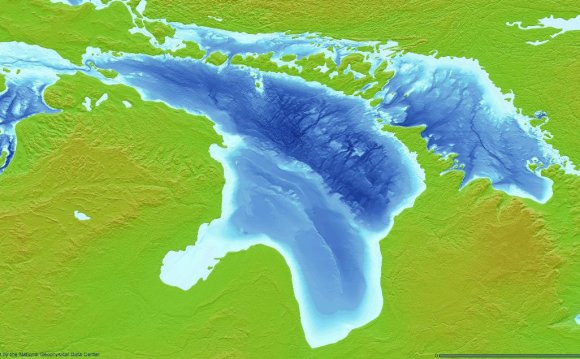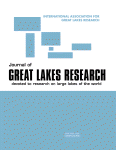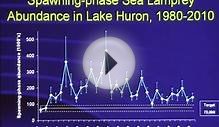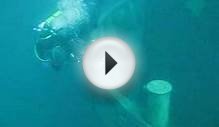
 Submersed macrophyte communities and turbidity near shore were measured from 1991 to 1993 to determine if more light resulting from colonization of zebra mussels (Dreissena polymorpha Pallas) into Saginaw Bay in 1990 corresponded with changes in macrophyte distribution. Turbidity was sampled along five transects distributed at intervals perpendicular to the perimeter of inner Saginaw Bay to monitor changes in light available to plants in Saginaw Bay. Vegetation was sampled in July along these transects to determine the distribution and composition of the macrophyte communities each summer. We also measured the maximum depth of colonization and the area of plant coverage by use of 31 transects evenly distributed around Saginaw Bay in August. Turbidity decreased (P ≤ 0.097) at transects in northern littoral regions from 1991 to 1993 over submersed plant communities and uncolonized sediments, but not in southern littoral regions. The relative abundance of submersed macrophytes increased (P ≤ 0.0001) at all transects from 1991 to 1993, especially at transects where turbidity decreased significantly. Maximum depth of colonization (2.0 m) and the area of macrophyte coverage (101.3 km2) increased in Saginaw Bay, especially in the northwestern littoral region of the bay. Macrophytic chlorophytes, charophytes, and Vallisneria americana increased (P ≤ 0.003) in relative abundance most at transects where turbidity decreased significantly. These results demonstrate that even in a large well-mixed lacustrine environment, zebra mussels have the capacity to reduce turbidity sufficiently to allow submersed macrophytes to expand their distribution and abundance.
Submersed macrophyte communities and turbidity near shore were measured from 1991 to 1993 to determine if more light resulting from colonization of zebra mussels (Dreissena polymorpha Pallas) into Saginaw Bay in 1990 corresponded with changes in macrophyte distribution. Turbidity was sampled along five transects distributed at intervals perpendicular to the perimeter of inner Saginaw Bay to monitor changes in light available to plants in Saginaw Bay. Vegetation was sampled in July along these transects to determine the distribution and composition of the macrophyte communities each summer. We also measured the maximum depth of colonization and the area of plant coverage by use of 31 transects evenly distributed around Saginaw Bay in August. Turbidity decreased (P ≤ 0.097) at transects in northern littoral regions from 1991 to 1993 over submersed plant communities and uncolonized sediments, but not in southern littoral regions. The relative abundance of submersed macrophytes increased (P ≤ 0.0001) at all transects from 1991 to 1993, especially at transects where turbidity decreased significantly. Maximum depth of colonization (2.0 m) and the area of macrophyte coverage (101.3 km2) increased in Saginaw Bay, especially in the northwestern littoral region of the bay. Macrophytic chlorophytes, charophytes, and Vallisneria americana increased (P ≤ 0.003) in relative abundance most at transects where turbidity decreased significantly. These results demonstrate that even in a large well-mixed lacustrine environment, zebra mussels have the capacity to reduce turbidity sufficiently to allow submersed macrophytes to expand their distribution and abundance.
Index words
- Macrophytes;
- transparency;
- Saginaw Bay;
- zebra mussels;
- Lake Huron
YOU MIGHT ALSO LIKE












